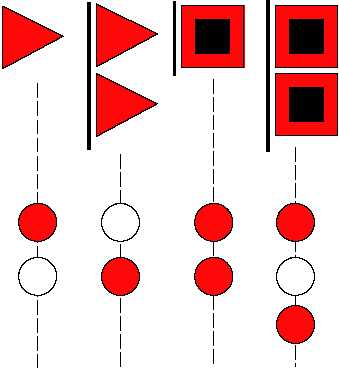Timely and accurate weather observations are
basic to the development of meteorological and
oceanographic forecasts in support of fleet operations.
Since the U.S. Navy may be committed to operations
anywhere in the world, total global observations of
meteorological and oceanographic conditions are
required. Ships in port are required to make regular
weather observations and to report by electronic means
unless there is a nearby U.S.-manned weather-
reporting activity. In-port weather observations and
reports of guard ship arrangements may be used for
groups of ships at the discretion of the senior officer
present. In such instances, the weather logs of
exempted ships should bear a notation of the guard
ship(s) and effective dates and times. Table 8-1
provides the minimum requirements for reporting
weather observations by Navy ships.
Not all Navy ships make weather observations.
Ships in port usually receive local weather messages
that are sent out at various times to all commands.
Weather messages usually contain the latest
information compiled using U.S. weather satellites.
They can show the approach of storms long before they
reach your area. As a POOW you may not have to make
weather readings or log weather information; but, at
the approach of a storm, you may have to go to the
bridge and record weather information for the OOD. If
you ever have any questions about weather reporting,
you should always consult the duty Quartermaster, as
that knowledge is a part of the Quartermaster rating.
8-18
SMALL CRAFT
GALE
STORM
HURRICANE
DAYTIME
SIGNALS
NIGHT
LIGHT
SIGNALS
WIND SPEED
(KNOTS)
UP TO 33
34 - 47
48 - 63
64 - UP
Figure 8-6. Small craft, gale, storm, and hurricane warnings.
LATITUDES
SURFACE WIND
SPEED (kts)
TIMES (GMT) FROM
0000Z
PRECEDENCE
All Latitudes
0-33
34 and greater
every 6 hours
every 3 hours
Priority
Immediate
Table 8-1. Requirement for Surface Weather Observation by Ships

